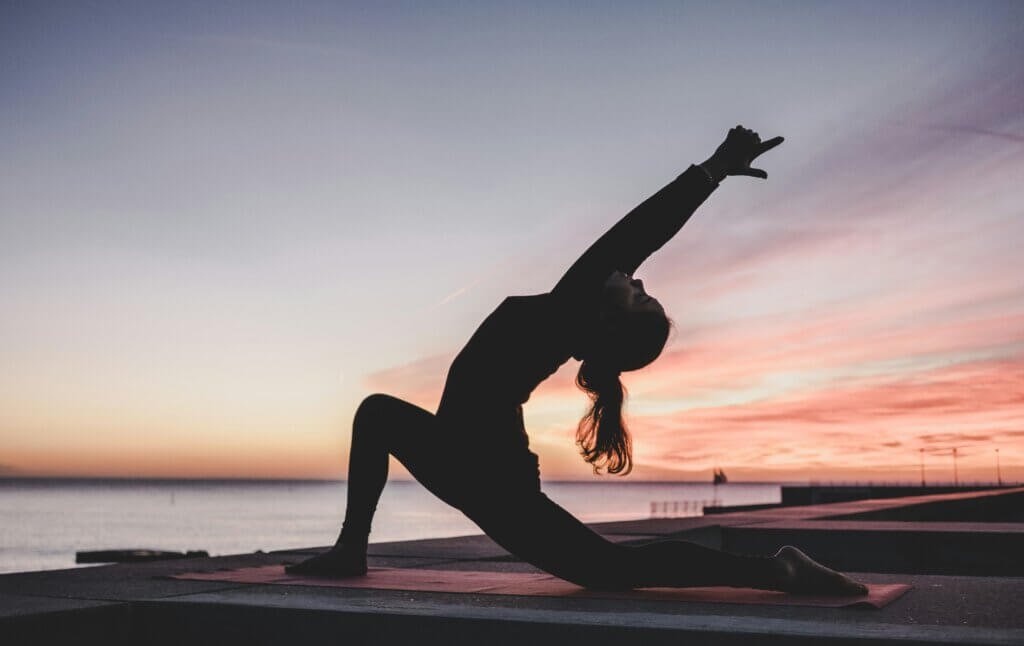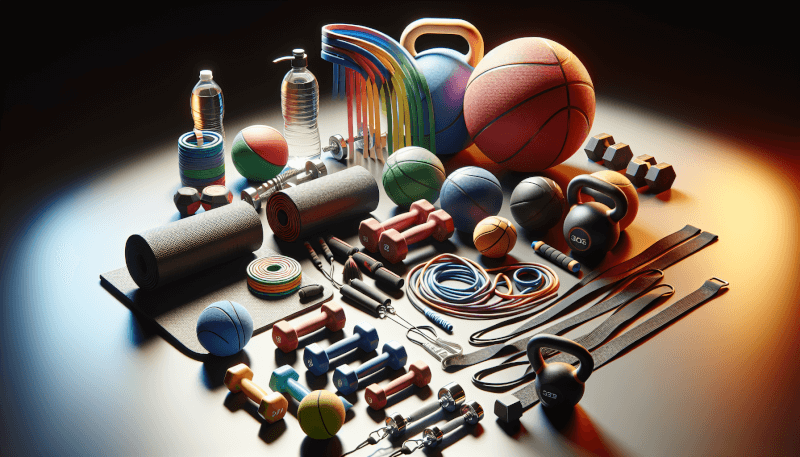Are you ready to take your workout routine to the next level? Look no further than “The Ultimate Guide To Using Workout Accessories For Full-Body Workouts.” This comprehensive guide will show you how to maximize your fitness goals by incorporating a variety of workout accessories into your routine. From resistance bands to stability balls, we will explore the benefits of each accessory and provide step-by-step instructions on how to use them effectively. Whether you’re a beginner or an experienced fitness enthusiast, this guide is designed to help you achieve a more well-rounded and effective workout. So grab your water bottle and get ready to elevate your fitness journey!

Choosing the Right Workout Accessories
When it comes to full-body workouts, having the right workout accessories can make all the difference in achieving your fitness goals. Before you dive into purchasing any accessories, it’s important to consider your fitness goals. Are you looking to build strength, improve flexibility, or increase endurance? Understanding your objectives will help guide you in selecting the right accessories that align with your goals.
Another crucial factor to consider is your current fitness level. Assessing your fitness level will help you determine the intensity and difficulty level of your workouts. It’s essential to choose accessories that challenge you without compromising your safety. If you’re a beginner, you may want to start with lighter resistance bands or lower weight dumbbells, gradually increasing the intensity as you progress.
While it’s always great to explore and experiment with new accessories, it’s advisable to consult a trainer or fitness expert before incorporating them into your routine. They can provide guidance and ensure you are using the accessories correctly to avoid any potential injuries. A qualified professional can also help tailor your workouts to best suit your needs and help you achieve optimal results.
Researching different workout accessories is also essential before making any purchases. By checking reviews, watching tutorial videos, and reading articles, you can gain valuable insights into the effectiveness and benefits of specific accessories. This research will allow you to make informed decisions and invest in accessories that will truly enhance your full-body workouts.

Must-Have Workout Accessories for Full-Body Workouts
When it comes to full-body workouts, there are several workout accessories that are considered must-haves. These accessories can target various muscle groups, provide resistance, and intensify your workouts. Let’s explore some of the essentials:
Resistance Bands
Resistance bands are versatile and effective accessories that can be used for strengthening and toning various muscle groups. They come in different resistance levels, allowing you to gradually increase the intensity as you build strength. With resistance bands, you can target your arms, legs, glutes, and even engage your core. They are also lightweight and portable, making them ideal for home workouts or when you’re on the go.
Dumbbells
Dumbbells are classic workout accessories that are essential for full-body workouts. They can be used to target specific muscle groups, increase strength, and improve overall muscle definition. Dumbbells come in a range of weights, allowing you to choose the appropriate weight for your fitness level and goals. Whether you’re performing bicep curls, lunges, or shoulder presses, dumbbells provide the necessary resistance to challenge your muscles.
Exercise Mat
An exercise mat is a crucial accessory for full-body workouts, especially if you’re performing exercises that involve floor work, such as planks, push-ups, or yoga poses. Exercise mats provide comfort, support, and stability during your workouts, preventing any discomfort or strain on your joints. They also provide a non-slip surface, ensuring your safety while performing exercises that require balance or stability.
Jump Rope
Jump rope is not just for kids; it’s an excellent accessory for full-body workouts. Jumping rope is a high-intensity cardio exercise that helps improve cardiovascular endurance, coordination, and agility. It engages multiple muscle groups, including your legs, arms, and core. Jump ropes are portable, affordable, and can be used virtually anywhere, making them a convenient option for adding cardio to your routine.
Foam Roller
Foam rollers are fantastic tools for both recovery and full-body workouts. They are cylindrical in shape and are used for self-massage and myofascial release. Foam rolling before and after workouts helps improve muscle flexibility, reduces muscle soreness, and speeds up recovery. Additionally, foam rollers can be used during workouts to engage core muscles, increase stability, and enhance the intensity of certain exercises.
Kettlebell
Kettlebells are versatile workout accessories that can add resistance and intensity to your full-body workouts. With a kettlebell, you can perform various exercises targeting different muscle groups, including swings, squats, deadlifts, and shoulder presses. Kettlebells challenge your stability, balance, and coordination due to their unique shape and off-centered weight distribution. They are a great addition to any home gym or workout routine.
Balance Ball
Balance balls, also known as stability balls, are excellent for targeting core muscles, improving balance, and strengthening muscle groups throughout your body. They can be used for exercises such as planks, crunches, squats, and push-ups, adding an additional challenge due to the unstable surface they provide. Balance balls come in different sizes, so it’s important to select the one that is appropriate for your height and preference.
Medicine Ball
Medicine balls are weighted balls that can add resistance to your full-body workouts. They come in various weights and sizes, allowing you to choose the one that suits your fitness level and goals. Medicine balls can be used for exercises such as Russian twists, wall throws, squats with overhead press, and more. They are versatile and can target multiple muscle groups, providing a total-body workout experience.
Pull-Up Bar
Having a pull-up bar at home is a game-changer for upper body workouts. Pull-ups engage multiple muscle groups, including your back, arms, and shoulders, helping you build overall upper body strength. Pull-up bars can be easily installed in doorways and provide a cost-effective solution for incorporating challenging upper body exercises into your routine.
Ankle Weights
Ankle weights are wearable weights that are strapped around your ankles to add resistance to lower body exercises. They can help strengthen and tone your legs, glutes, and even engage your core to a certain extent. Ankle weights are adjustable in weight and are suitable for various fitness levels. They can be used during exercises like leg lifts, side kicks, or even during cardio workouts to intensify the challenge.

Using Resistance Bands for Full-Body Workouts
Resistance bands are one of the most versatile workout accessories you can incorporate into your full-body workouts. They provide a portable and affordable way to engage your muscles and add resistance to various exercises. Let’s dive into the benefits of resistance bands and explore some exercises for each muscle group.
Understanding Resistance Bands
Resistance bands are flexible bands made of latex or rubber that provide resistance when stretched. They come in different colors, which represent different resistance levels. Yellow bands have the least resistance, while black bands have the most. By choosing the appropriate resistance level, you can tailor your workouts to your fitness level and goals.
Exercises for Upper Body with Resistance Bands
Resistance bands can effectively target and tone your upper body muscles, including your arms, chest, back, and shoulders. Here are some exercises you can try:
Bicep curls: Stand with your feet shoulder-width apart and step on the resistance band with one foot. Hold the handles with your palms facing forward, then curl your hands toward your shoulders, keeping your elbows close to your body. Slowly lower the bands back down to the starting position and repeat.
Resistance band push-ups: Place the resistance band across your upper back, holding both ends with your hands. Assume a push-up position with your hands slightly wider than shoulder-width apart. As you lower your body down, the resistance band provides an added challenge to your chest and triceps. Push back up to the starting position and repeat.
Bent-over rows: Step on the resistance band with both feet, shoulder-width apart. Hold the handles with your palms facing inward and hinge forward at the hips, keeping your back straight. Engage your back muscles as you pull the bands toward your chest, squeezing your shoulder blades together. Slowly release and repeat.
Shoulder presses: Stand on the resistance band with both feet, holding the handles at shoulder height with your palms facing forward. Press the bands overhead, fully extending your arms. Lower them back down with control and repeat.
Exercises for Lower Body with Resistance Bands
Engaging your lower body muscles with resistance bands can help improve strength and tone your legs and glutes. Here are some exercises to incorporate into your routine:
Squats with resistance bands: Stand with your feet shoulder-width apart, placing the resistance band just above your knees. Push your hips back and bend your knees, lowering into a squat position while keeping tension on the resistance band. Push through your heels to stand back up and repeat.
Glute bridges: Lie on your back with your knees bent and feet flat on the floor. Place the resistance band just above your knees. Lift your hips off the ground, squeezing your glutes as you bridge upward. Lower your hips back down and repeat.
Standing abductions: Stand with one end of the resistance band around your left ankle and the other end attached to a sturdy anchor point. Lift your left leg out to the side against the resistance of the band, keeping your torso stable. Slowly lower your leg back down and repeat. Switch sides and repeat on the other leg.
Lateral walks: Place the resistance band just above your knees. Stand with your feet hip-width apart and slightly bend your knees. Take small steps to the side, maintaining tension on the band. Repeat the steps in the opposite direction.
Exercises for Core with Resistance Bands
Resistance bands can also target your core muscles, helping improve stability and strength. Here are some exercises for your core:
Standing anti-rotation exercises: Attach the resistance band to a sturdy anchor point at chest height. Hold the band with both hands and stand perpendicular to the anchor point. Engage your core and resist the pull of the band as you rotate away from the anchor point, then return to the starting position. Repeat on the other side.
Russian twists: Sit on the floor with your knees slightly bent, holding the resistance band in front of you with both hands. Lean back slightly and lift your feet off the ground. Twist your torso to the right, bringing the band outside your right hip, then twist to the left, bringing the band outside your left hip. Continue alternating sides.
Plank with resistance band row: Assume a plank position with the resistance band securely anchored and wrapped around your wrists. Keep your core engaged as you pull one hand up towards your chest, bending your elbow and squeezing your shoulder blades together. Lower the hand back down and repeat on the other side.
Tips for Proper Form and Safety
When using resistance bands for full-body workouts, it’s important to maintain proper form and safety to avoid injuries. Here are some tips to keep in mind:
Start with the appropriate resistance level: Begin with a lighter resistance band if you’re a beginner and gradually increase the resistance as you build strength and improve your form.
Maintain proper alignment: Whether it’s an upper body, lower body, or core exercise, focus on keeping your body aligned and engaged. Avoid arching your back or bending your knees too far inward.
Create tension throughout the movement: Keep the resistance band taut throughout each exercise, ensuring constant tension on your muscles. This will increase the effectiveness of the exercise and maximize your results.
Start with controlled movements: As you get familiar with the resistance band exercises, focus on performing each movement slowly and with control. This will help you maintain proper form and prevent any jerky or abrupt movements that could lead to injury.
Listen to your body: Pay attention to any discomfort or pain during the exercises. If something doesn’t feel right, stop and reassess your form or modify the movement as needed. It’s crucial to prioritize your safety and well-being during workouts.
Incorporating resistance bands into your full-body workouts can bring variety and challenge to your routine. Experiment with different exercises and resistance levels to target specific muscle groups and achieve your fitness goals. With proper form and consistency, resistance bands can be a valuable addition to your workout arsenal.



